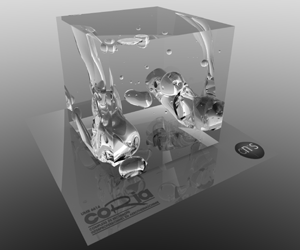Published online by Cambridge University Press: 08 January 2020

When a liquid stream is injected into a gaseous atmosphere, it destabilizes and continuously passes through different states characterized by different morphologies. Throughout this process, the flow dynamics may be different depending on the region of the flow and the scales of the involved liquid structures. Exploring this multi-scale, multi-dimensional phenomenon requires some new theoretical tools, some of which need yet to be elaborated. Here, a new analytical framework is proposed on the basis of two-point statistical equations of the liquid volume fraction. This tool, which originates from single phase turbulence, allows us notably to decompose the fluxes of liquid in flow–position space and scale space. Direct numerical simulations of liquid–gas turbulence decaying in a triply periodic domain are then used to characterize the time and scale evolution of the liquid volume fraction. It is emphasized that two-point statistics of the liquid volume fraction depend explicitly on the geometrical properties of the liquid–gas interface and in particular its surface density. The stretch rate of the liquid–gas interface is further shown to be the equivalent for the liquid volume fraction (a non-diffusive scalar) of the scalar dissipation rate. Finally, a decomposition of the transport of liquid in scale space highlights that non-local interactions between non-adjacent scales play a significant role.